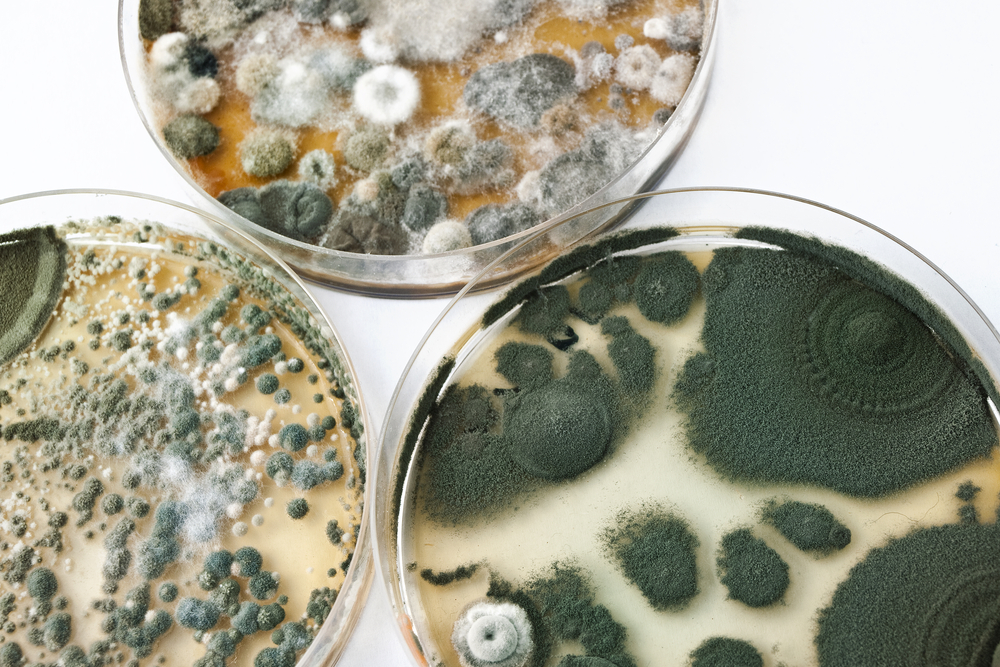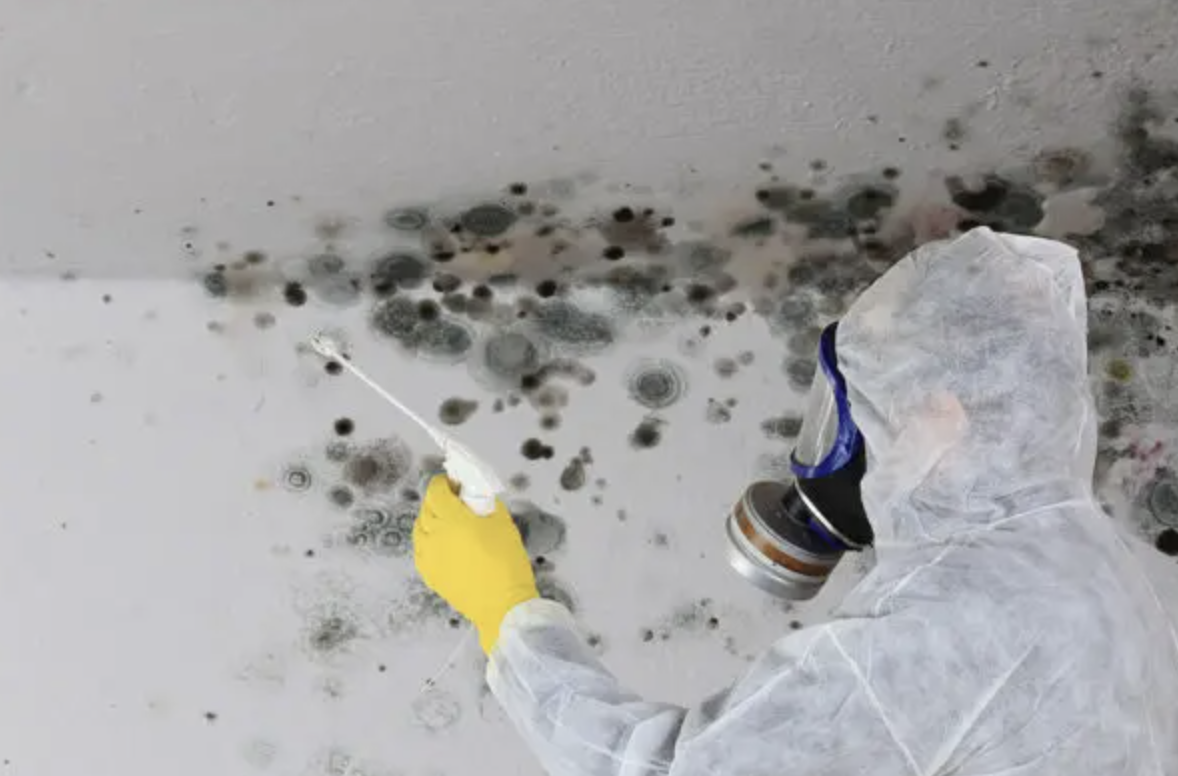Article by Joshua Kent
Moisture Master Pros OwnerMold can be a silent and sneaky problem in any home. It can grow in hidden areas, such as behind walls or attics, and cause serious health issues if left untreated. As mold remediation specialists, we have seen many different types of mold in homes, and we understand the importance of homeowners understanding the different types of mold and how to address them properly. If you suspect a mold problem in your home, keep reading to find the best practices for identifying, treating, and preventing them.
Understanding the Main Categories of Mold
Before diving into the specific types of mold, it is important to understand the different categories of molds found in homes and how to identify and remove them effectively. The following is a list of common categories of molds and a brief description of each category.
Allergenic mold: These types of molds, such as Aspergillus and Penicillium, can cause allergic reactions in some individuals, such as sneezing, runny nose, and red eyes. They are often found in damp or water-damaged areas.
Pathogenic mold: These types of molds, such as Fusarium and Acremonium, can cause infections and other health problems in people with compromised immune systems.
Toxigenic mold: This type of toxic mold, such as Stachybotrys (or black mold) and Chaetomium, produce mycotoxins, toxic substances that pose serious health hazards. They are commonly found in areas with high humidity levels and poor ventilation.
Indoor/Outdoor Mold: These types of molds, such as Cladosporium and Alternaria, are common in outdoor and indoor environments. They can grow on various surfaces and are commonly found in areas with high humidity and poor ventilation.
It is important to note that this is not an exhaustive list, and each home is unique. Therefore, it’s crucial to have a professional inspection to identify the specific types of molds present in your home and provide appropriate treatment.
5 Common Molds Found in Your Home
It’s important to thoroughly understand the various types of mold that can commonly be found in homes. This knowledge can help you identify the specific types of mold present in a home and subsequently determine the most effective method of removal.
These different types of mold can often be identified by their characteristic colors, including black, olive green or dark green, blue, gray, and white, and their distinctive musty or earthy smell.
Below you will find more information on the most common types of molds found in homes, how to identify them, and what your next steps should be if they are found.
Aspergillus:

Aspergillus is a mold found in damp or water-damaged areas with a moisture problem, such as bathrooms, kitchens, and basements, or on damp clothing, paper, and food. It is usually a green or brown color. Prolonged exposure to Aspergillus can cause health problems for some individuals, particularly those with compromised immune systems or respiratory issues. Symptoms can include allergic reactions such as sneezing, runny nose, red eyes, and more serious respiratory issues such as asthma and lung infections.
Cladosporium:
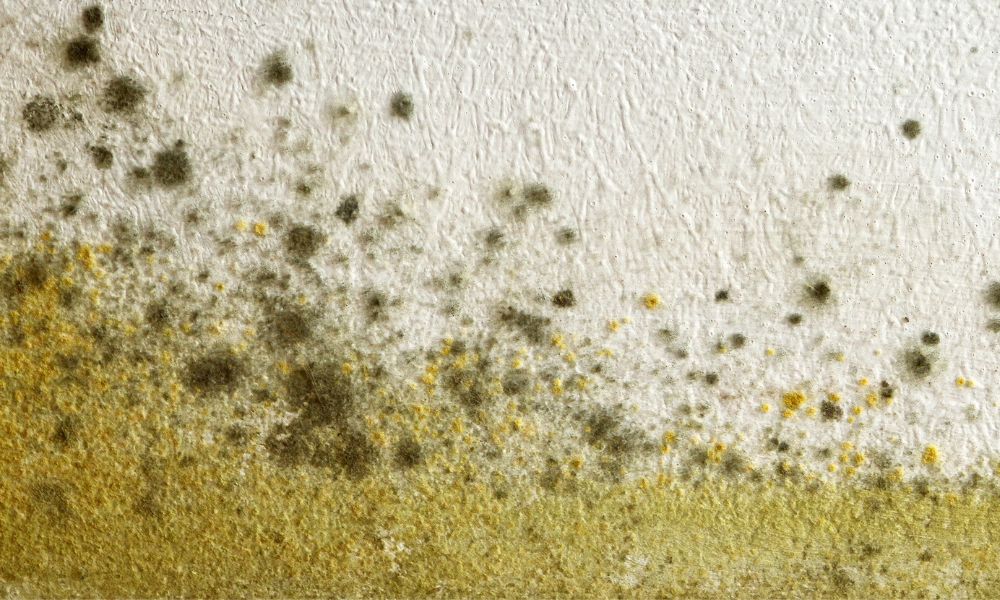
Similarly to Aspergillus, Cladosporium is a type of mold that is also found in homes in areas with high humidity levels. It is typically black or green and can appear as a powdery substance. It can grow on various surfaces, including wooden surfaces, wallpaper, and painted surfaces. Long-term exposure to Cladosporium can cause allergic reactions in some individuals, such as sneezing, runny nose, and red eyes. It can also aggravate asthma symptoms and lead to other respiratory issues.
In addition, Cladosporium can cause damage to the surfaces it grows on, making it important to address it as soon as it is identified.
Stachybotrys:

This type of mold is also known as “black mold” and can be found in homes, particularly in areas with high humidity levels and poor ventilation. It is typically black or greenish-black and can appear slimy or damp. It is commonly found in bathrooms, basements, attics, and around window frames.
This toxic black mold produces mycotoxins, harmful compounds that can cause health issues if inhaled. Exposure to toxic mold can have serious health effects, particularly for individuals with weakened immune systems or respiratory problems. Symptoms can include headaches, fatigue, sneezing, runny nose, and aggravation of asthma symptoms. In extreme cases, it can lead to more severe problems, such as neurological symptoms and respiratory system damage.
Penicillium:
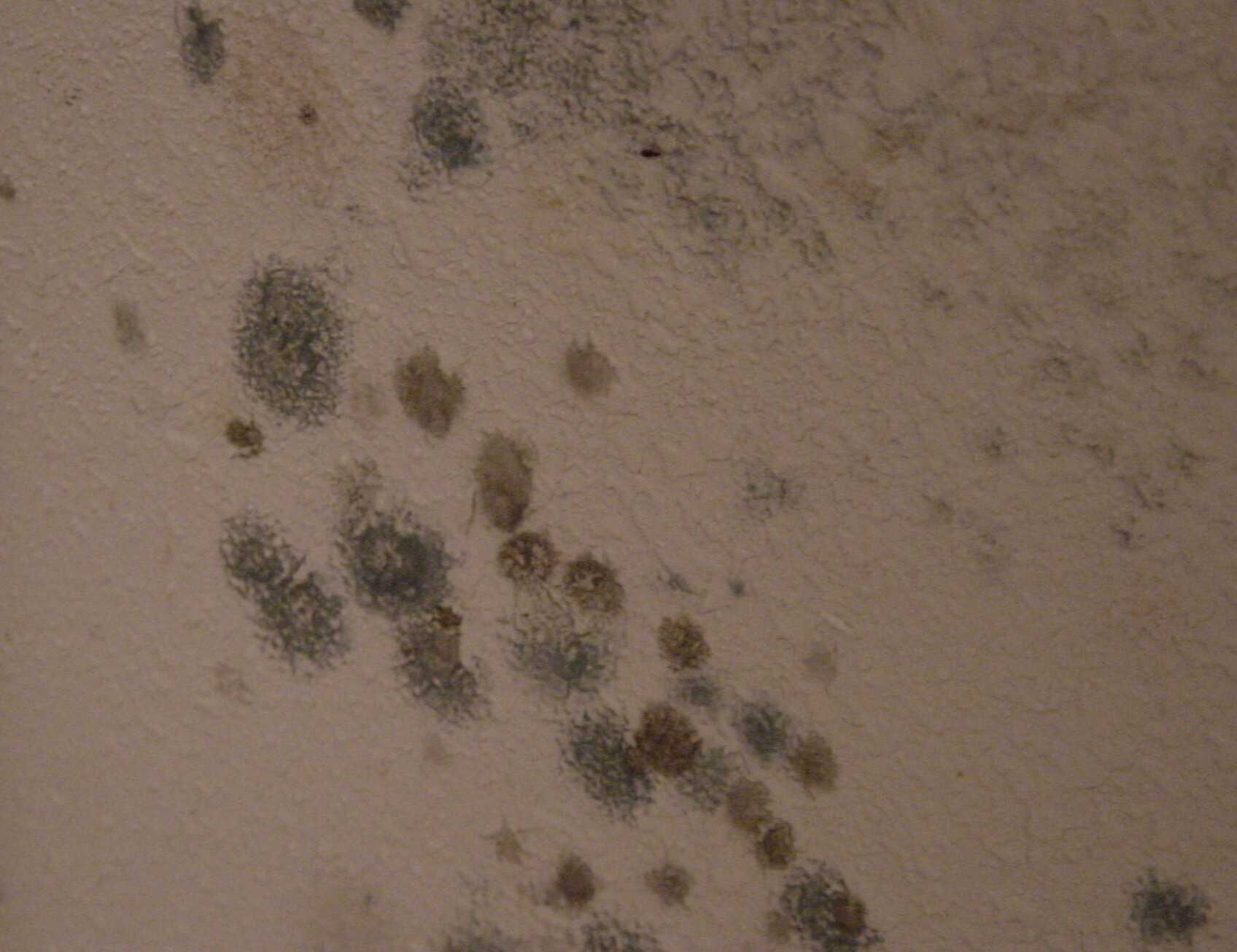
This mold is often found in damp areas or areas that have experienced water damage. It can be found on various surfaces, including wallpaper, carpet, and insulation. It typically appears as a powdery blue or green substance with a musty odor.
Exposure to Penicillium can cause allergic reactions in some individuals, such as sneezing, runny nose, and red eyes. In certain cases, it can also aggravate asthma symptoms and lead to other respiratory issues.
Fusarium:
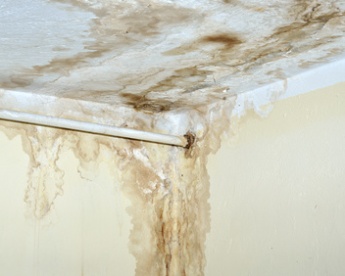
This mold can be found in homes, particularly in areas with high humidity or water-damaged buildings. It can be found on various surfaces, including carpet, wallpaper, and insulation. It typically appears as a white, pink, or yellow powdery substance and can have a musty smell. Exposure to Fusarium can cause allergic reactions, nail infections, and skin infections if it comes into contact with the skin.
So you’ve got a mold problem. Now what?
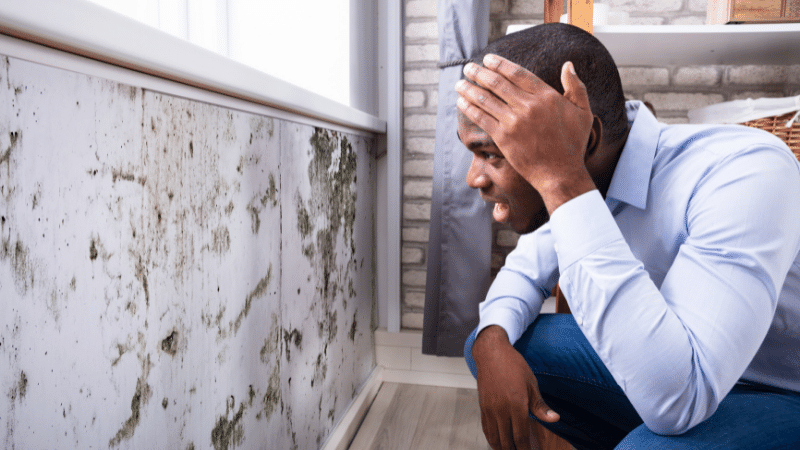
Now that you can identify various types of mold, what do you do?
At the first sign of mold infestation, it is crucial to treat it promptly as mold spores rapidly spread and pose a severe health hazard. In addition to health concerns, it can also lead to structural damage to your home. Whether you DIY or enlist the help of a professional, it is imperative to take action as soon as mold is detected.
For more info, check out our Guide to Mold-Free Living.
If you are attempting to treat mold yourself, here are a few additional things to keep in mind:
- Always wear protective gear such as gloves, goggles, and a mask when cleaning mold.
- Some mold can grow on various materials and surfaces in your home, such as wallpaper, carpet, and insulation. Be sure to remove and replace the affected materials.
- Ensure the area is properly ventilated during and after the cleanup process.
- Regularly inspect your home for any sign of leaks, humidity, or water damage, and address them immediately to prevent mold from returning.
- If you suspect mold is growing behind walls or in other hidden areas of your home, it is best to contact a professional for testing and removal.
- After the cleanup, it’s important to monitor the area to ensure that the mold doesn’t return and that the air quality is good.
When to leave it to the professionals
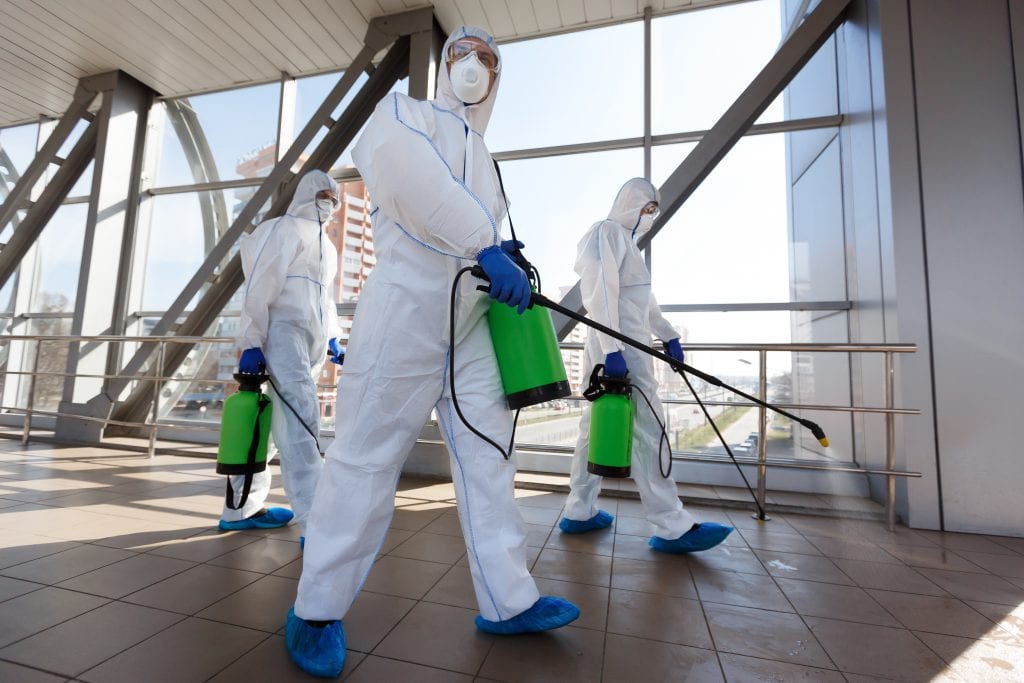
For extensive or toxic molds, it is best to hire a professional mold remediation company. We cannot stress enough the importance of using a professional when treating mold in your home. Mold can cause serious health problems and structural damage if left untreated. It is not something that should be taken lightly or attempted to be handled on your own.
Mold remediation is not a simple task; it requires a proper assessment, planning, and execution to ensure that the mold is removed and the environment is safe. A professional mold remediation specialist will have the training, experience, and equipment necessary to safely and effectively remove mold from your home. A specialist can also help identify the source of the mold and provide recommendations on how to prevent it from returning.
If you suspect mold in your home, it is important to have it professionally inspected and treated by a mold remediation specialist to ensure your family’s safety and health and protect your home from further damage.
Call Moisture Master Pros for Your Mold Issues!
Our team of experts uses state-of-the-art technology and techniques to quickly and effectively eliminate mold from your property.
Click Here to Contact Us Today!How can you prevent mold in your home?
Mold thrives in moisture-rich, warm environments with poor ventilation. It can cause health and respiratory problems if not addressed properly. Keeping mold dry and well-ventilated is the key to preventing mold in your home. This includes fixing leaks, poor ventilation, and high humidity levels.
To prevent mold from returning:
- Control humidity levels: Mold thrives in moist environments, so it’s important to keep humidity levels in your home low. This can be achieved by using a dehumidifier, running fans, or opening windows to allow for proper ventilation.
- Maintain good air quality: You can maintain good indoor air quality by using air purifiers, regularly cleaning, and using a dehumidifier in areas of your home that are prone to high humidity.
- Fix leaks and repair water damage: Any leaks or water-damaged areas in your home should be addressed immediately. This includes fixing leaks in pipes, roofs, or appliances and repairing any water damage caused by floods or storms.
- Keep surfaces clean and dry: Regularly cleaning and drying surfaces in your home, such as bathrooms and kitchens, can help to prevent mold growth. This includes wiping surfaces, vacuuming, and cleaning up spills and condensation immediately.
- Use mold-resistant materials: Consider using mold-resistant materials, such as mold-resistant drywall and paint, when doing home renovations or construction. This can help to prevent mold growth in the future.
- Monitor your home for mold: Regularly inspecting your home for mold, including in areas often neglected, such as attics and basements, can help you catch and address mold growth early on.
Final Thoughts on Household Mold
It is important to be aware of the common types of molds that can be found in homes, as well as the proper treatment and prevention methods. Mold can cause serious health problems and structural damage if left untreated.
It is essential to regularly inspect your home for signs of mold and address any issues promptly. Proper ventilation, moisture control, and regular cleaning can help prevent mold growth in your home.
If you suspect mold in your home, it is important to have it professionally inspected and treated by a mold remediation specialist to ensure your family’s safety and health and protect your home from further damage. It’s always better to be safe than sorry, and it’s recommended to have regular inspections to ensure that your home is mold-free.

